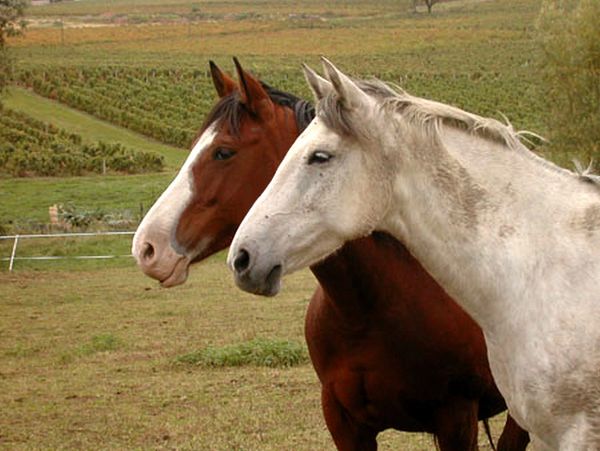
Horse physiotherapy
Veterinary Physiotherapy can benefit your horse by promoting pain free function, improving range of movement and optimising the healing process.
In conjunction with your veterinarian, as a Chartered ACPAT Physiotherapist I am able to help your horse with the following conditions:
- Back pain
- Neck pain
- Sacroiliac dysfunction
- Soft tissue injury including muscle strain
- Post-operative rehabilitation including kissing spine surgery
- Joint stiffness
- Lameness and compensatory movement patterns
- Chronic degenerative conditions including osteoarthritis and long-term management
- Rehabilitation post injury
- Management of the older horse (maintenance of muscle, optimising joint range and reducing pain)
- Muscle atrophy, tightness and weakness

Behavioural changes
Behavioural changes and schooling difficulties may also be an indication that your horse could benefit from a Physiotherapy review. As with all athletes physical aches and pains can develop in the horse. However, horses are good at masking their pain and will compensate with other muscles and often the only indication you might get that something is not quite right is a change in behaviour. Some common concerns include:
- Reluctance to be brushed over their back
- Reluctance to be tacked up
- Difficulty with transitions
- Difficulty maintaining canter on one rein
- Resistance to usual exercise e.g. stopping at jumps
- Saddle slip
- Difficulty maintaining a contact
- Reduced suppleness
In these cases I will liaise with the relevant professions if required.

What to expect from your horse physio session
Each session, whether it be initial or follow up, will begin with a thorough subjective and objective assessment. Following this, a comprehensive management plan will be made including a treatment on the day, and a bespoke home exercise plan. All goals will be made in conjunction with yourself, tailored for you and your horse. Hands on treatment options include, but are not limited to:
- Manual therapy including joint mobilisations
- Myofascial release
- Soft tissue techniques including massage and trigger point release
- Reflex inhibition
- Stretches/dynamic mobilisation exercises
- Reflex/rounding techniques
- Transcutaneous electrical nerve stimulation (TENS)
- Class 3B laser
- TMM
- Neuromuscular electrical stimulation (NMES)
- Biomag pulsed electromagnetic field therapy (PEMF)
Join My Mailing List
Copyright © 2024, Lammermuir Physiotherapy. All Rights Reserved.
Powered by GoDaddy
This website uses cookies.
We use cookies to analyze website traffic and optimize your website experience. By accepting our use of cookies, your data will be aggregated with all other user data.